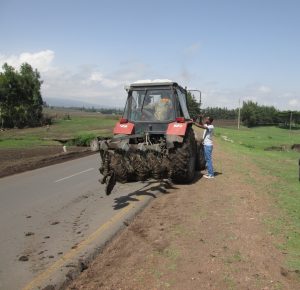ESSP Working Paper 105, by Guush Berhane, Mekdim Dereje, Bart Minten, and Seneshaw Tamru.
Abstract: The uptake of agricultural mechanization in Ethiopia is low with less than one percent of agricultural plots plowed with a tractor. However, in recent years the uptake of agricultural machinery has accelerated. We note an impressive increase in imports of combine-harvesters and of tractors, seemingly associated with the increasing costs of agricultural labor and animal traction, substitutes for agricultural mechanization. We estimate that a quarter of the area in Ethiopia planted to wheat – the fourth most important cereal in the country – is currently harvested by combine-harvesters, and they are widely used in the major wheat growing zones in the southeast of the country in particular. Private mechanization service providers have rapidly emerged. Smallholders in these wheat growing zones rely heavily on agricultural machinery rental services for plowing, harrowing, or harvesting. We find that mechanization is associated with significantly lower labor use, and that the adoption of combine-harvesters – but not tractors – is significantly associated with higher yields, seemingly due to lower post-harvest losses. While further expansion of mechanization in the country is desired, given the environmental and financial cost of holding oxen and the higher yields linked with some forms of mechanization, it appears to be hampered by farm structures, particularly small farm sizes and consequent limits in scale; fragmented plots; crop diversity; physical constraints, such as presence of stones, steepness of fields, and soil types; and economic and financial constraints, including limited access to foreign exchange and credit and the still relatively low wages in less commercialized zones. Download the PDF.
